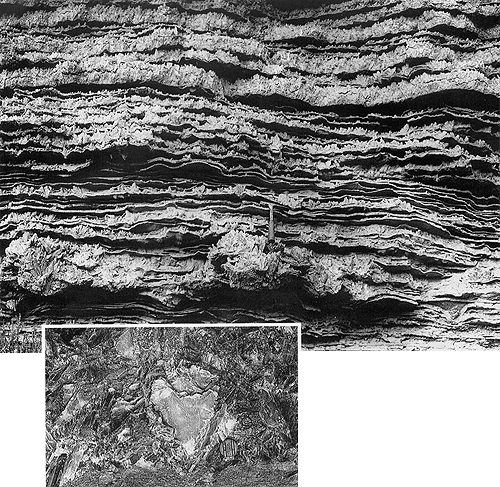
Crystal aggregations: palisades and bushes
(cavoli )
Plate 165

Crystal aggregations: palisades and bushes
(cavoli )
Plate 165
Gypsum beds protrude from the outcrop and alternate with pelitic partings. Part of the gypsum is finely crystalline, thin-bedded and laminated ("balatino" facies, as it is called in Sicily), part is macrocrystalline (selenite) and organized in laterally continuous beds (upper part of the section), incomplete beds (center), and isolated clusters, or "bushes." The bushes, or cavoli, deformed underlying beds under their weight. The continuous layers are called palisades for their flat base (the substrate where crystal growth started) and ragged top, which reflects the tails of the selenite twins (see detail in the small photo inset, and plate 142). Crystal growth is influenced by the number of seeds, or nuclei, per unit area. Where the nuclei are closely spaced and uniformly distributed, lateral growth is restricted and a vertical alignment ensues. In clusters, crystal axes diverge upwards because lateral confinement is reduced or absent.
Selenite crystals nucleate within shallowly submerged to intertidal sediment, and can incorporate bacterial mats during their growth (see plate 142).
Messinian gypsum beds of Eraclea Minoa, Sicily.